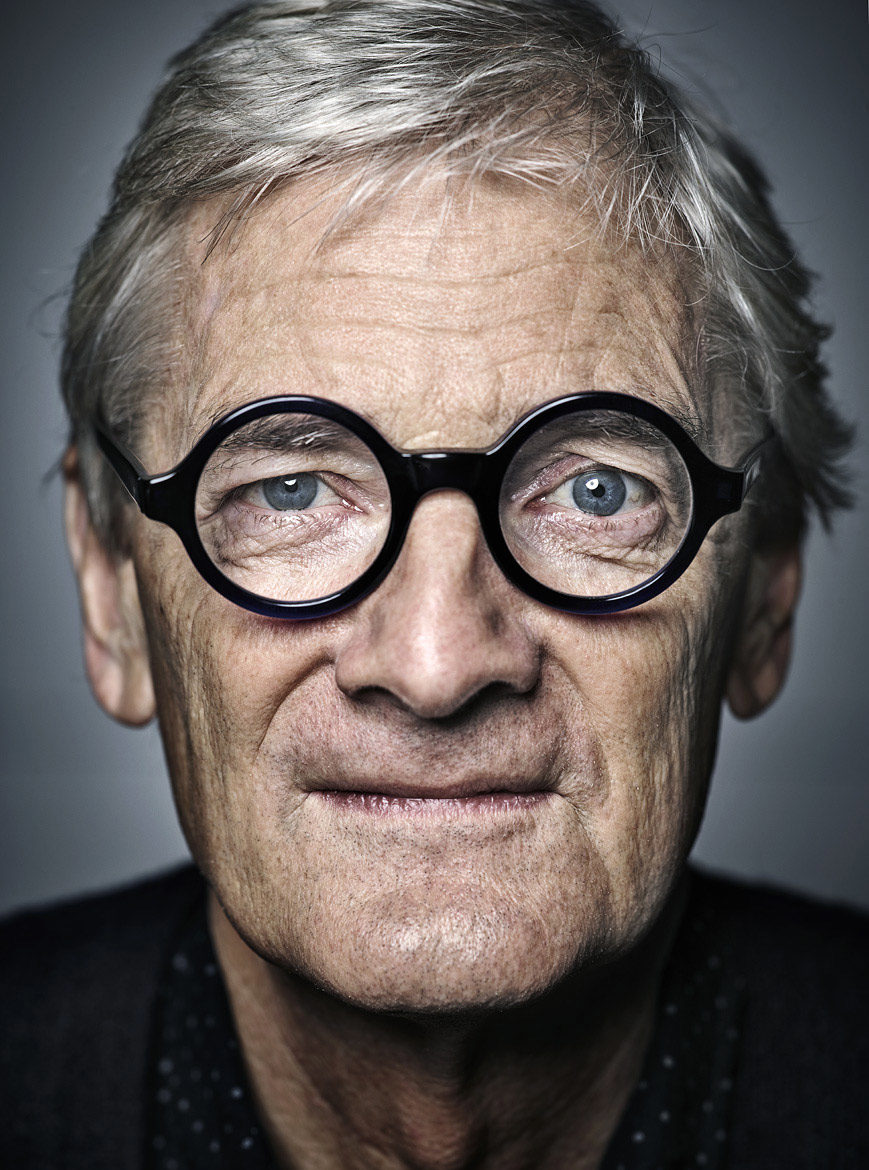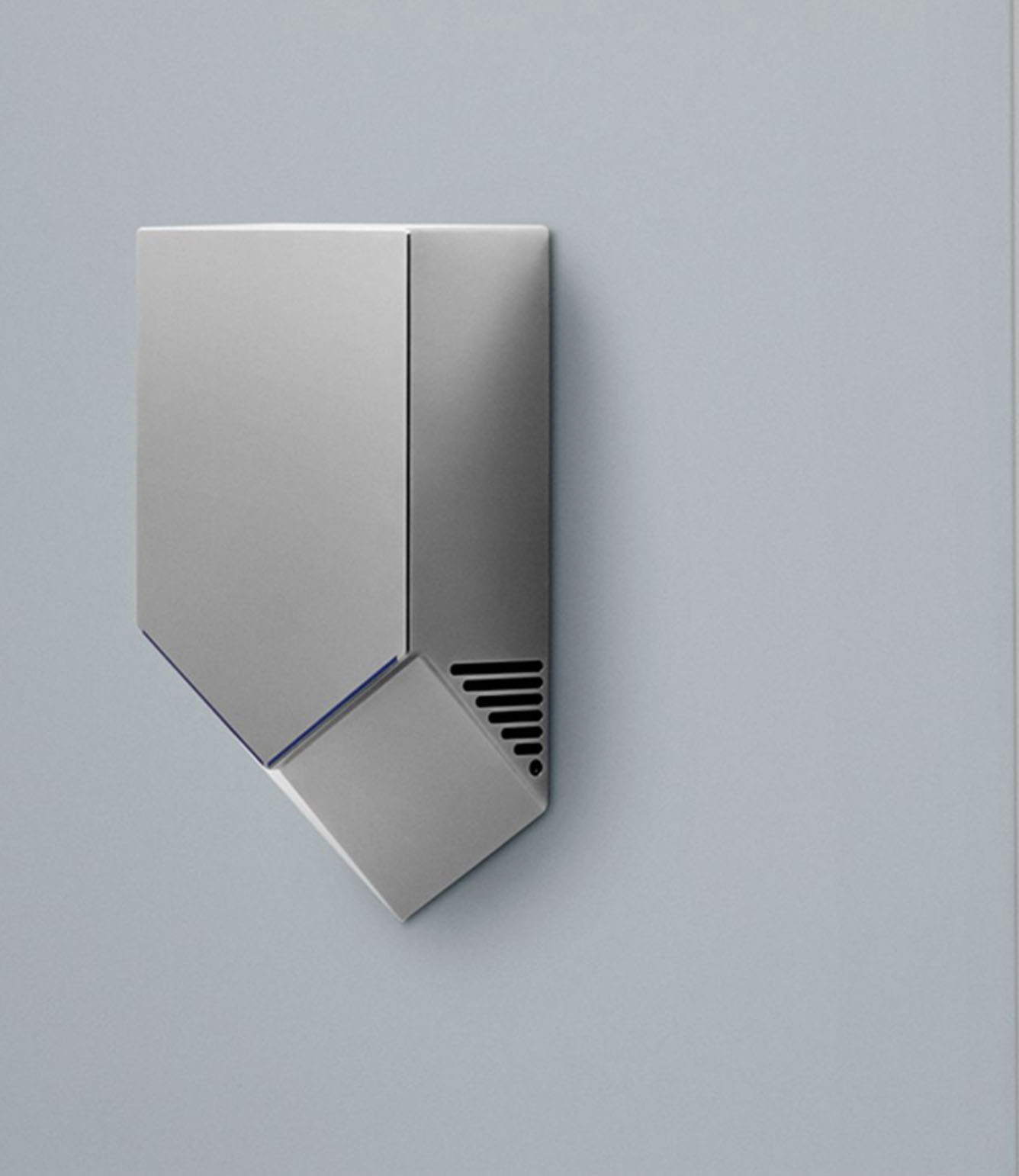Life
& Career
Born in Cromer, Norfolk, England, young James Dyson attended a prestigious independent boarding school called Gresham’s School in rural Holt, North Norfolk, from 1956 to 1965. After graduation, he spent one year at Byam Shaw School of Art, an independent art school in London, before he studied furniture and interior design at the Royal College of Art (RCA). Later in his education he was introduced to the possibilities in uniting design and engineering together. Working for Rotork Controls Ltd., Dyson helped designing the Rotork Sea Truck in 1970, his last year at the Royal College of Art. Rotork Sea Truck is a small, high-speed landing craft made out of fiberglass, which was used by the military or civilian customers. Dyson founded his own company later in 1974 to produce Ballbarrow, a modified version of a wheelbarrow that uses ball instead of a narrow wheel.
In the late 1970s, Dyson had issues with what claimed to be the most powerful vacuum cleaner on the market. Instead of sucking up dirt, all the vacuum cleaner did was push the dirt around the room. Dyson thought he could apply the same principle of cyclonic separator he has seen from industrial sawmills to a vacuum clear. Cyclonic separation is a method of removing unnecessary particles from air, gas, or liquid stream without using any filters, but through a vortex separator. He worked for the next five years adapting this method to home vacuum cleaners, testing out more than 5,000 prototypes to create a model that uses cylindrical container that swirls in dirt. This dirt was separated by centrifugal force, while purified air escaped out the top of the vacuum cleaner. At first, makers of traditional bag-type vacuum cleaners showed zero interest in Dyson’s bagless household device. This made Dyson sell his vacuum cleaner (also known as the G-Force) to a company in Japan, leaving him deep antipathy towards convention businesses. In Japan, however, the G-Force became a commercial success, winning a design award in 1991. Dyson opened a factory in North Wiltshire in 1993, and within two years the dual cyclone vacuum became a hit in Britain despite its high retail price than that of competing brands. Dyson’s unique and modern designs of household devices continued to win many awards and be exhibited in art and design museums around the world.

Engineering
& Designing

Design
Philosophy
Dyson incorporates both engineering and design into his products as a person who studied design then engineering as a student before. “What I want to do is develop new technology and make great products that perform really well and are lovely to use.” Dyson is certainly an engineering company. Their motto is fairly simple, they constantly question existing products and think about how to improve them. Although this process may seem illogical, Dyson continues to test and solve problems that “others have ignored.”
“The word design must be taken in the literal sense. Design is nothing if it does not contribute anything in terms of technology or ergonomics.” One of Dyson’s first products to gain recognition was the Ballbarrow in the 1970s. The wheelbarrow was indeed both strong and lightweight due to its plastic material. Yet, “designing” a spherical wheel instead of a narrow wheel prevents the barrow from sinking into the soft ground.
Dyson does not design to make his product look beautiful or fashionable. He designs to make his ideas work. Dyson’s products have a unique appearance, but that was not to make them look pretty but to serve a purpose. Like the transparent parts often used in Dyson’s vacuum cleaners are not there for aesthetic design. Dyson is proud of his technology, and he believes that “users should understand how their machines work,” which is why he uses as many transparent parts as possible. Understanding Dyson company’s philosophy is fairly simple: they seek to improve products that are common around us. “I’m not a good businessman,” claimed Dyson. “I just hope that I make good products that work well and have better performance than other people’s products.”
"Enjoy Failure
and Learn From It"
Success
& Recognition
Dyson was awarded the Prince Philip Designers Prize in 1987, and was named a Commander of the Order of the British Empire (CBE) in the 1998 New Year honours. In 2000, Dyson was given the Lord Llyod of Kilgerran Award, and received an honorary doctorate degree from the University of Bath. He was elected as a Fellow of the Royal Academy of Engineering in 2005, and then was elected as a Fellow of the Royal Society in 2015. In March 2017, Dyson was voted to be the most reputable company in the United Kingdom.
Dyson published Again the Odds in 1997, an autobiography of his persistence from discouragement. In 2002, James Dyson Foundation was established, which was aimed to encourage young to the studies of engineering through awards and grants. In 2008, Dyson was invited by the Conservative Party to propose policies that could encourage innovation. Through a report called Ingenious Britain: Making the UK the Leading High Tech Exporter in Europe, James Dyson suggested that there needs to be more freedom for universities to design unconventional, unique engineering curriculum as well as more collaboration between colleges and technology companies to move innovation forward.

New
Approach

Evolutionary
Technology
Dyson products are well known for its evolutionary technology and design on household devices. Currently most famous for its vacuum clear and hair dryer, James Dyson continues to improve products in the market.
Dyson Supersonic hair dryer is one of Dyson’s evolutionary design products. It has a futuristic shape with a hole in the middle. This shape is essential to the function of the machine, but it created challenges for its development. Most traditional hair dryers use flat sheets of Mica slotted to each other for the heating portion of the machine. Then, wire is wrapped around this structure. Dyson had to develop a heating element that can function within the unique shape of the hair dryer, so they designed a heating elements that uses special Mica tubes positioned in a donut shape with two resistive wires wrapped around them. The wires are placed in a wave-form pattern and woven together around the tubes. Applying two layers of heating elements with two wires allow smaller wave patterns tightly woven. The process of making sure the heating process works properly in the unique-shaped mach8ine took approximately three years, producing iterative developments and thorough testing on the heating element to ensure it worked safely.
"Engineering
from a design point of view"
An
Inspiration
Dyson products are now everywhere. I own two Dyson products at home, and even a Dyson vacuum cleaner in my dorm room. My first encounter with Dyson was when my mother brought in a Dyson vacuum cleaner to our house. She told me it was a popular high-tech vacuum cleaner, perfect to replace our old, half-broken vacuum cleaner we had before. Then I encountered Dyson products in home shopping channels, public bathrooms, and even in hotel rooms. Before, I really liked his designs because of its minimalistic features. The unique shape and use of colors really caught my attention as a consumer. However, getting to know more about who James Dyson is and what he values as an engineer and designer, I can see more than just an aesthetic piece of product design. The mechanics and technologies incorporated to design is what creates the Dyson that we know of. James Dyson has created innovative and evolutionary technological designs to objects that people consider common.
